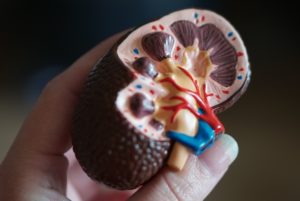 The kidney plays a vital role in maintaining homeostasis within the body by eliminating toxic and superfluous substances in the bloodstream, including waste generated during metabolic processes, through urine. Nevertheless, toxicity can also be induced in the kidney from certain medications. Recently, a research team from Pohang University of Science and Technology (POSTECH; Pohang, South Korea) has engineered an artificial kidney that allows for the early detection of adverse drug reactions.
The kidney plays a vital role in maintaining homeostasis within the body by eliminating toxic and superfluous substances in the bloodstream, including waste generated during metabolic processes, through urine. Nevertheless, toxicity can also be induced in the kidney from certain medications. Recently, a research team from Pohang University of Science and Technology (POSTECH; Pohang, South Korea) has engineered an artificial kidney that allows for the early detection of adverse drug reactions.
The POSTECH research team led by Dong-Woo Cho and Jinah Jang (POSTECH, Pohang, South Korea) fabricated a glomerular microvessel-on-a-chip, which includes glomerular endothelial cells, podocyte layers, and a glomerular basement membrane (GBM) using a single-step fabrication process. The research findings have been published in the journal Biofabrication.
When an excessive quantity of drugs is administered, the nephron is often the first organ to exhibit drug toxicity in the body, says a POSTECH press release. Efforts have been directed toward the development of artificial organs that can determine the degree of toxicity induced by specific drug concentrations and combinations before actual drug administration. However, the press release argues, it should be noted that the glomerulus is responsible not only for regulating endothelial cells but for selectively releasing proteins. This function requires interactions of podocytes and GBM proteins and is executed at a microscopic scale, making its emulation difficult.
The team successfully fabricated a glomerular microvessel-on-a-chip that recapitulates the intricate arrangement of the glomerular endothelial cells, podocyte layers, and GBM in a single step. This perfusable chip permits the co-culture of monolayer glomerular endothelium and podocyte epithelium, which demonstrate mature functional markers of glomerular cells. Moreover, the proper interactions between these cells lead to the production of GBM proteins, the key components of the GBM in vivo. Additionally, the team assessed the selective permeability capacity, a hallmark function of the glomerular filtration barrier in this novel glomerular model as well as evaluated the response of this model to Adriamycin- and hyperglycemia-induced injury.
“We have successfully replicated glomerular units of the kidney, which offer boundless potential for drug screening and nephrotoxicity testing in clinical practice,” explained Dong-Woo Cho, who led the study. He added: “This development will enable us to detect drug toxicity early by facilitating glomerulus disease modelling and to provide personalised treatment for patients.”












